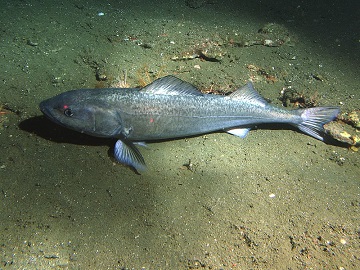630822-Sablefish.jpg

Sablefish are a good source of healthy omega-3 fatty acids. Credit: NOAA
A fish known as black cod has become a lot more popular in recent years. It has a buttery texture and flavor, and it contains a lot of healthy omega-3 fatty acids. And federal agencies say it’s sustainable—current populations and fishing regulations mean it’s not in danger of disappearing.
The only problem is that it’s not a cod at all. Instead, it’s the sablefish—one of only two species in its family. But it’s acquired a lot of aliases, including butterfish, blue cod, and more than a half-dozen others.
Sablefish inhabit the northern Pacific Ocean, near the bottom, in deep waters. They’re found on both the Asian and American sides. In North America, they range from the Aleutian Islands to Baja California. There are three big fisheries for them—off Alaska, British Columbia, and from Washington down to northern California.
The fish typically reach about two-and-a-half to three feet in length, and weigh 10 pounds or more. The ones in Alaska are a good bit bigger—up to more than four feet. And sablefish can live a long time—it’s not unusual for boats to bring in fish that are more than 40 years old, and the record is 94 years.
Commercial fishing for them peaked about 40 years ago. But sustainable practices have helped keep the numbers fairly stable since then. In 2019, American boats brought in about 41 million pounds of sablefish, worth almost 90 million dollars. But they left behind a good-sized population—no matter what you call this popular fish.

